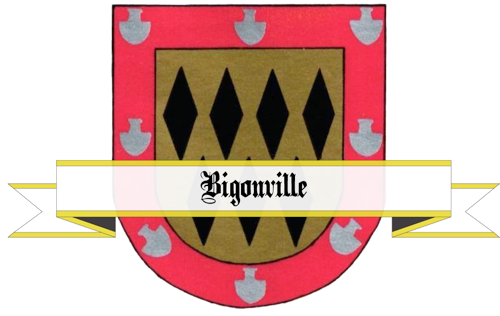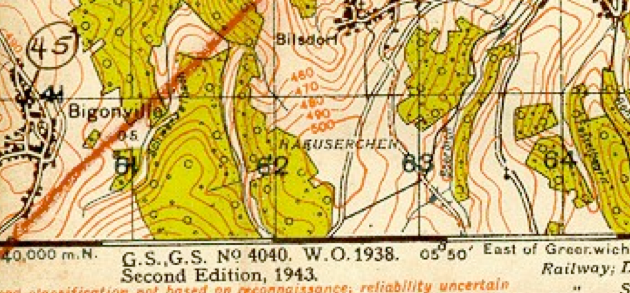Civilian side
10 May 1940: The German Army is crossing the frontier and enters Luxembourg. Early in the morning, the Wehrmacht troops are in the streets of the villages along the Our and Moselle River. They are riding bicycles, driving scout cars, self-propelled guns, tanks, horses tracking their equipment. They encounter little resistance. Luxembourg people never believed that Hitler would invade their country as he had made agreements with Great Britain and other countries.
The grand-ducal family and the government are driven off the country to France, a few days later they got to England. There, they supported the Luxembourg Resistance and established a valuable diplomatic headquarters to resist against the aggressors.
Bigonville, on the border to Belgium, is an anonymous stop on the road to Belgium and France. Around noon, German troops took quarters in Bigonville, confident to be in Paris very soon. They are dismounting and taking a rest. Bigonville people never saw such troops and they are on the streets to have a look at the soldiers and their equipment.
In 1941, the Nazi Government with Gauleiter, Chef der Zivilverwaltung, Gustav Simon is installed. An 'Amtsbürgermeister'-Office is opened at Redange/Attert. This office is the main executive force; all orders and advices come from here, political training, propaganda and repressions, even persecutions. Bigonville being in the Redange/Attert sector, this is where people have to go for all kind of official documents.
Later on, a Customs Office is set up in the former school building in Bigonville, at about 10 customs officers are located in Bigonville. A German Police Office is established in Perle, at about 3 miles from Bigonville. German Party organizations are installed: NSDAP, HJ and others.
In 1942, regulations to draft luxembourg citizens into the Wehrmacht "Bekanntmachung - Wehrdienst im Kreise Diekirch" are published. Families of draftees who did not follow the orders to enter the army were resettled into Germany.
Reichsarbeitsdienst RAD
Wehrdienstverweigerer
Alphonse Deltgen
Robert Schumacher
Jos. Strotz
François Felten
Local civilians remember the Battle of the Bulge
Sophie Lion-Lutgen
Nic. Molitor
Paul Kettel
Jos. Thomas
Jos. Mantz
Newspaper clip “Luxemburger Wort”
After the Bulge, 4 civilians having been killed, 43 houses were completely destroyed and 64 buildings damaged. The Grand-Duchess visits liberated Bigonville on 14 May 1945.
Between 1945 and 1947: German POW's were working on the farms in Bigonville. At Flatzbour(Hof), 2 destroyed self propelled guns left there after the battle, were taken away in 1945.

